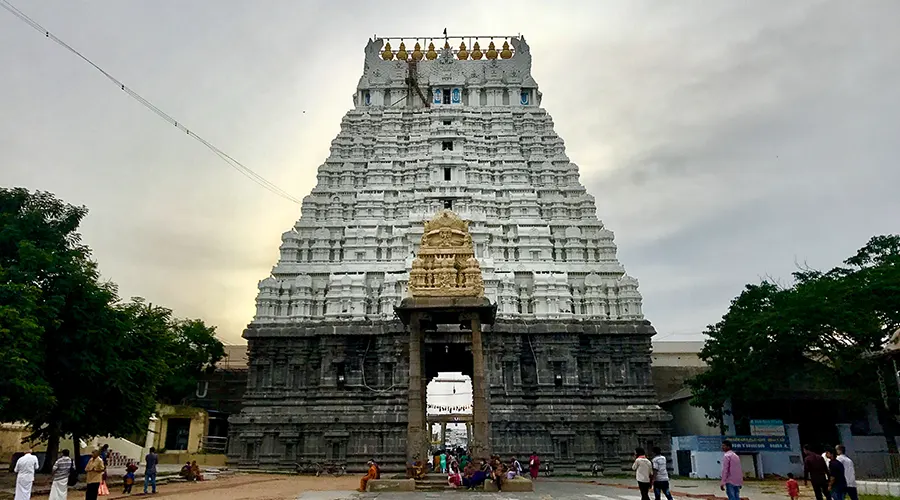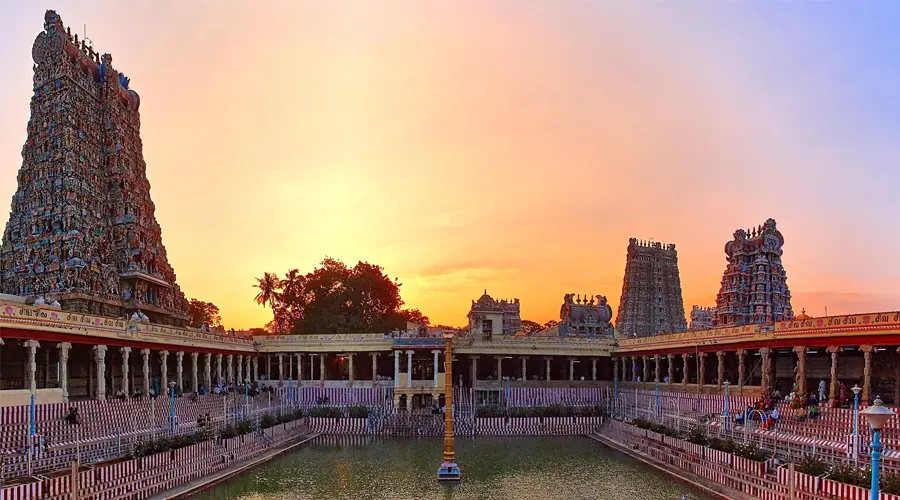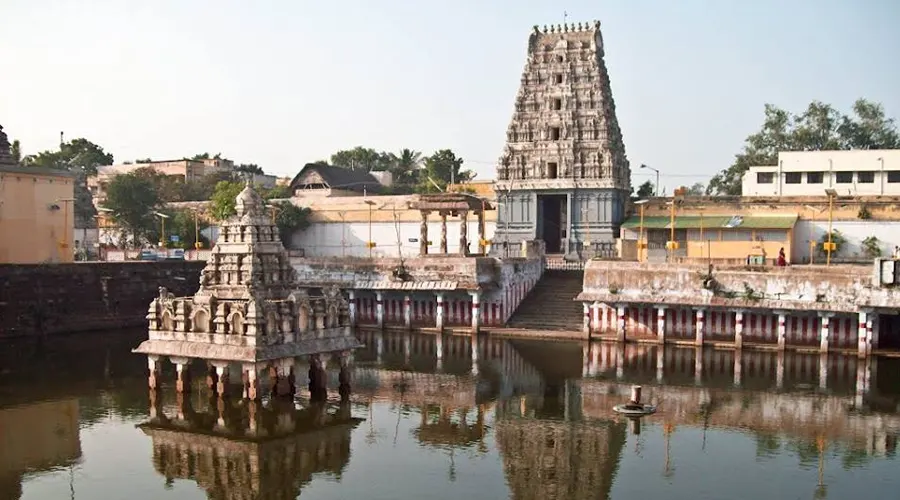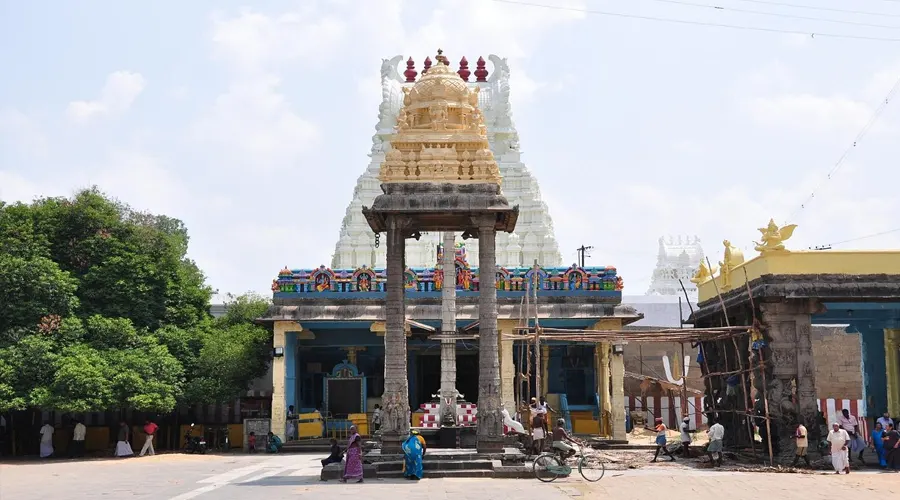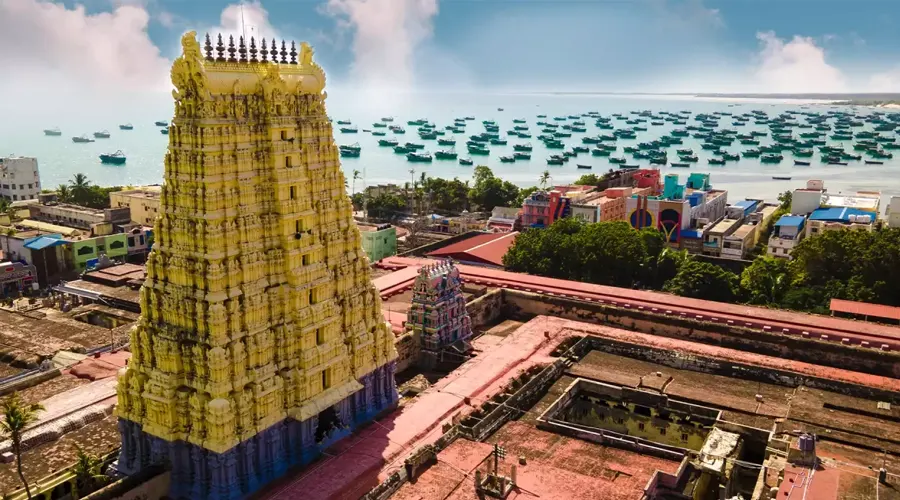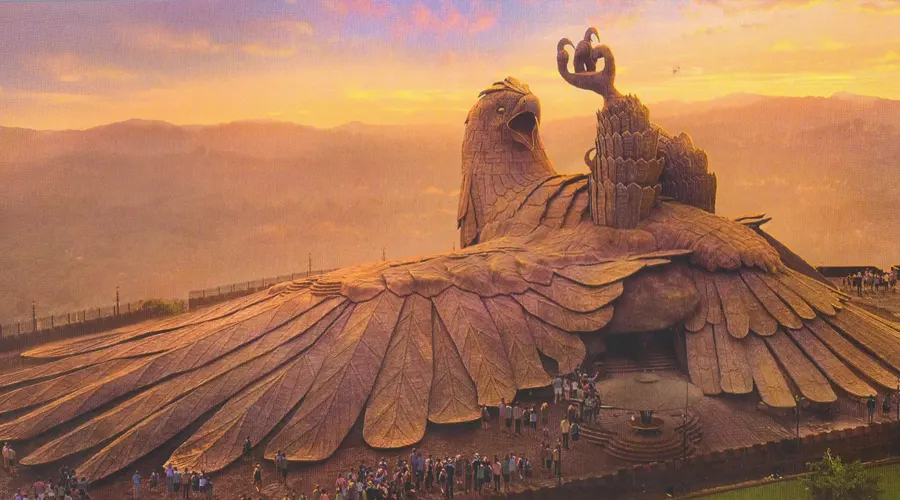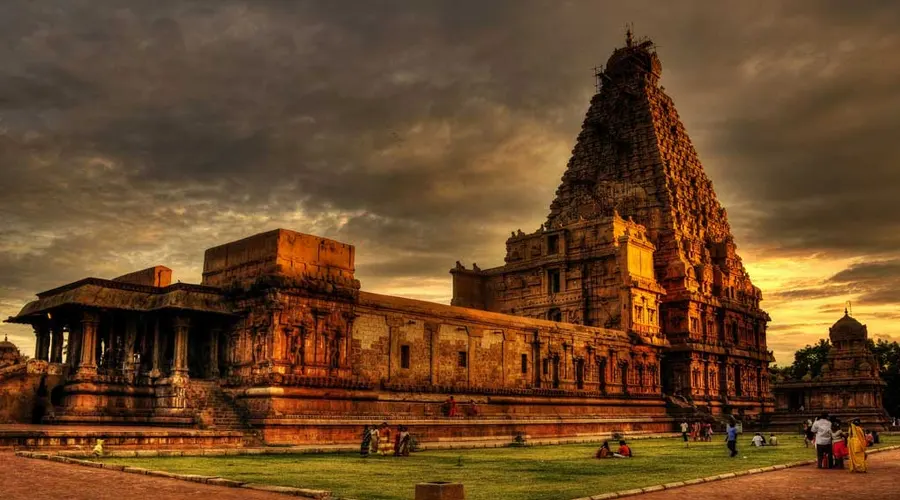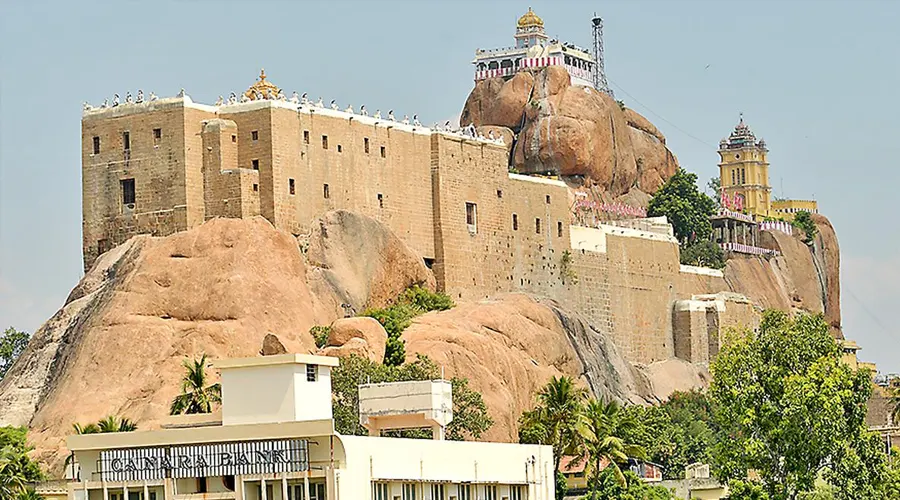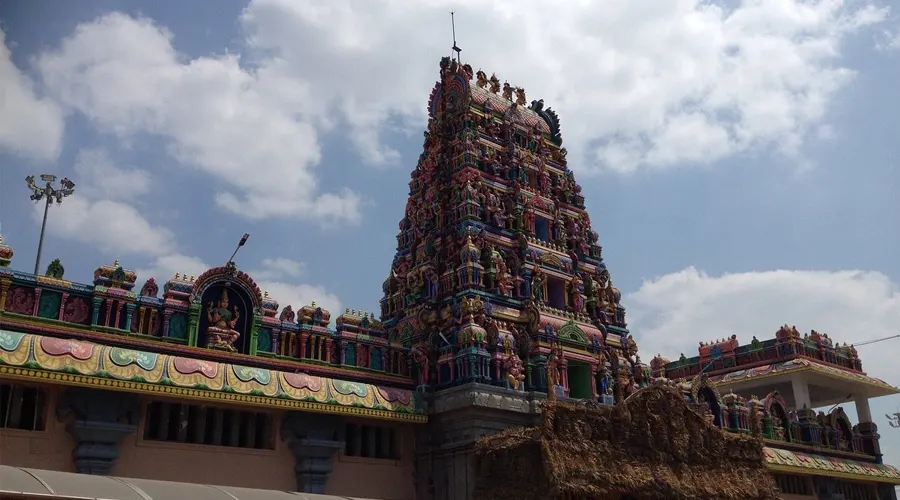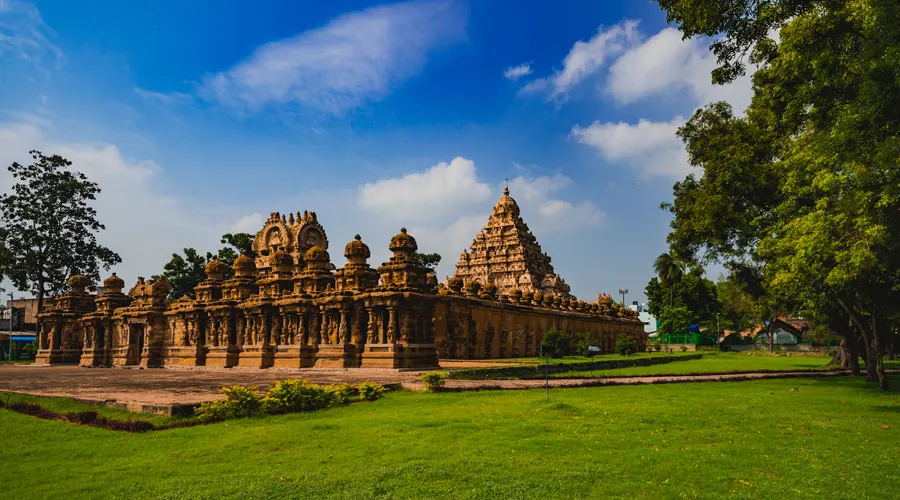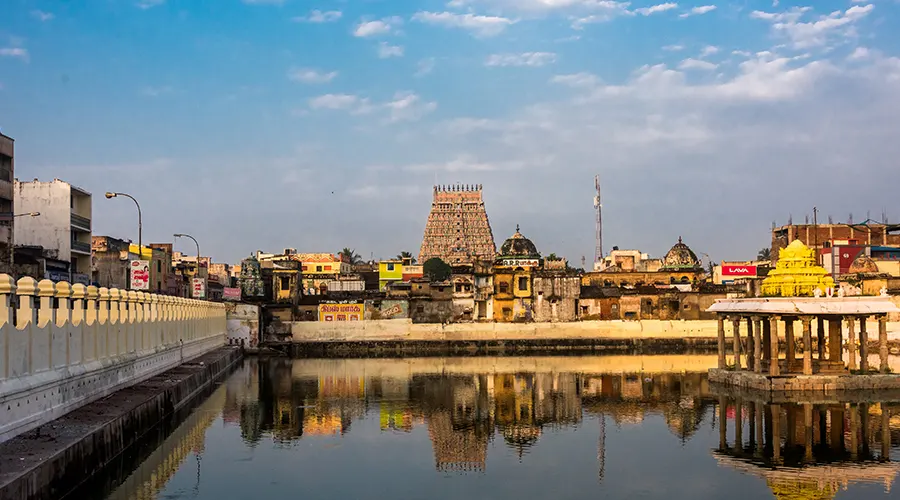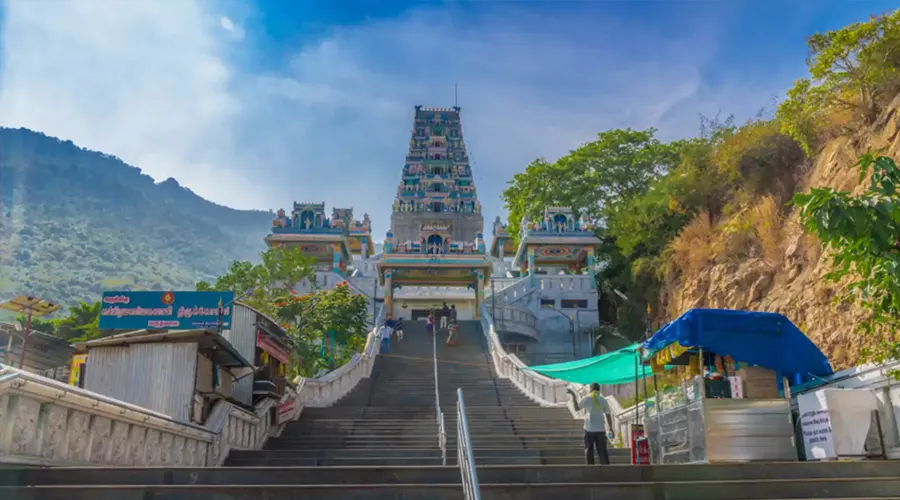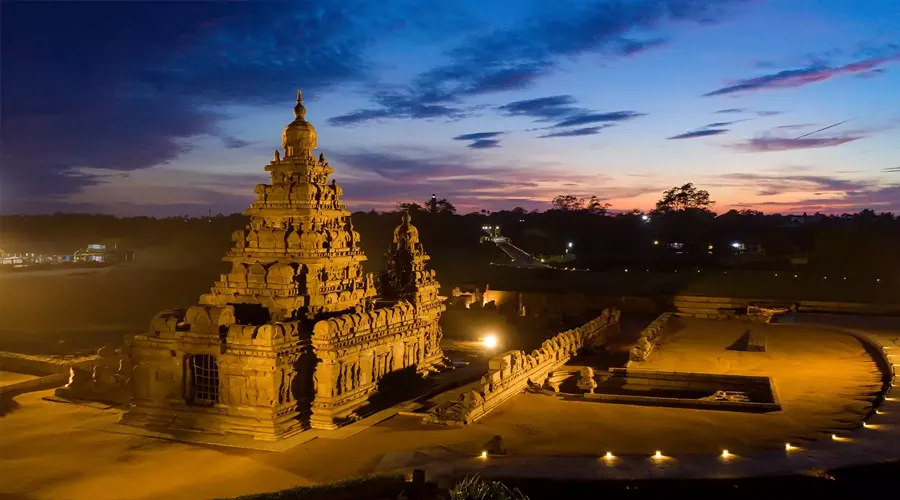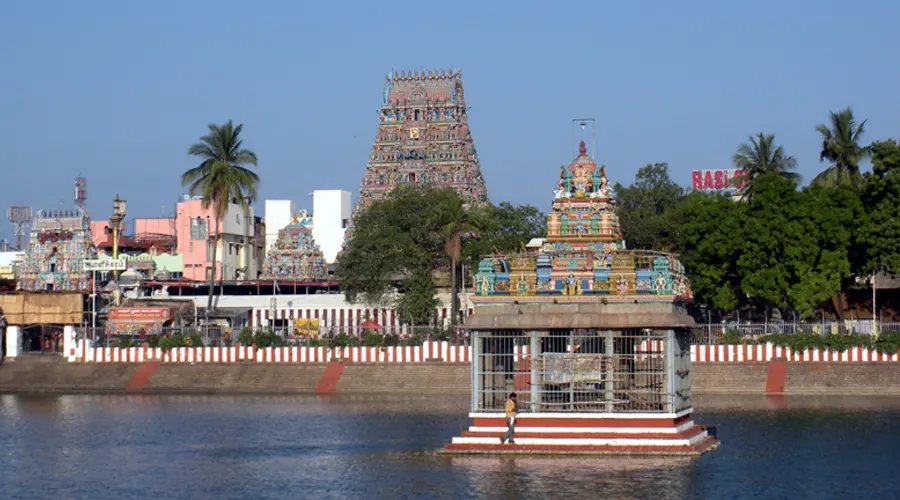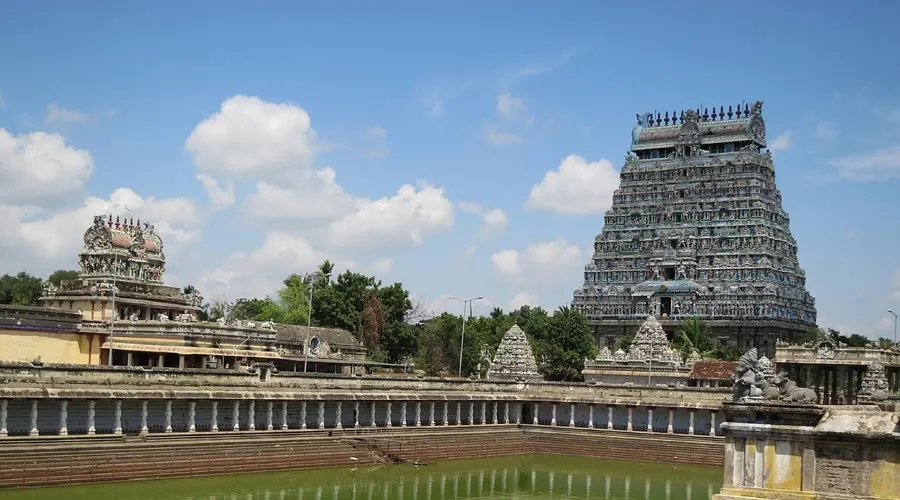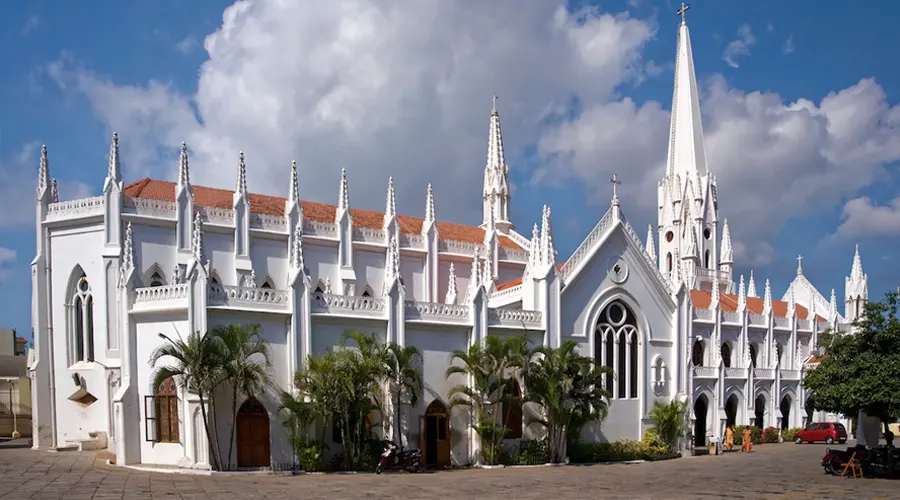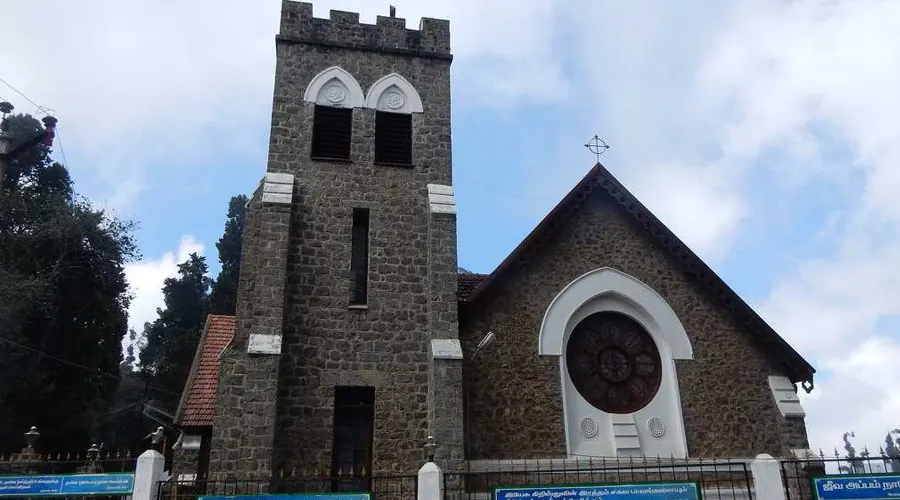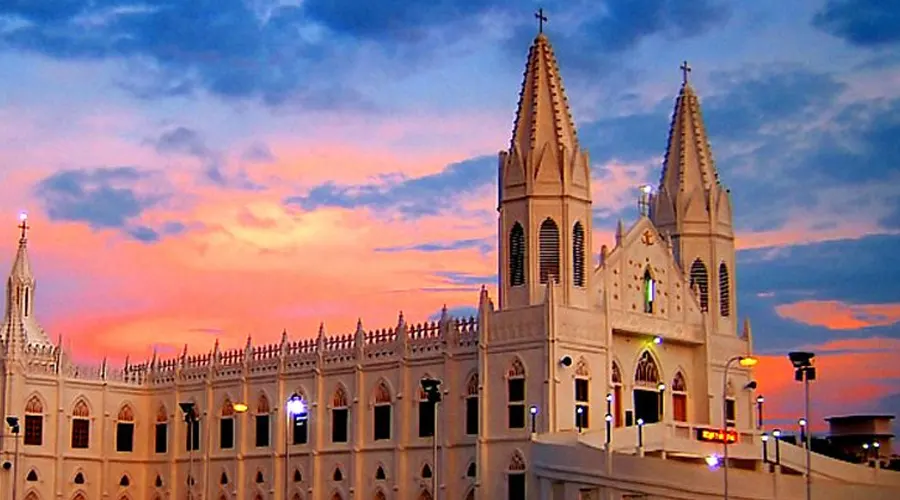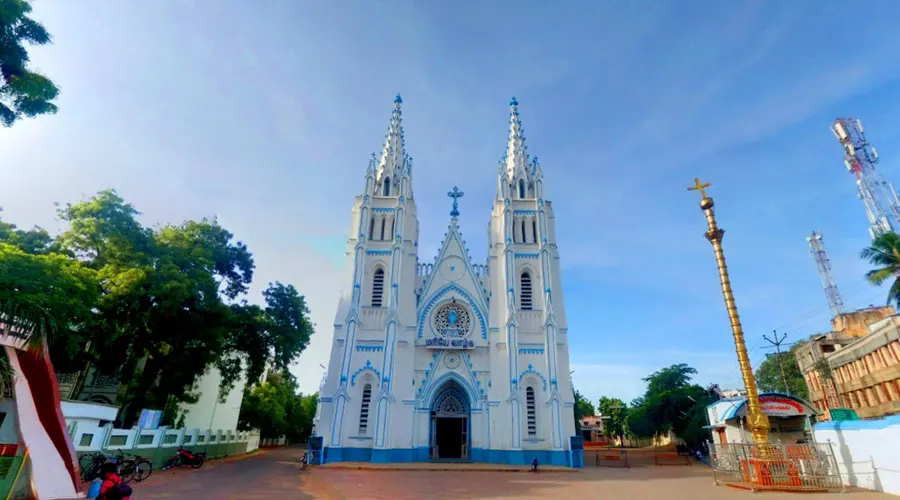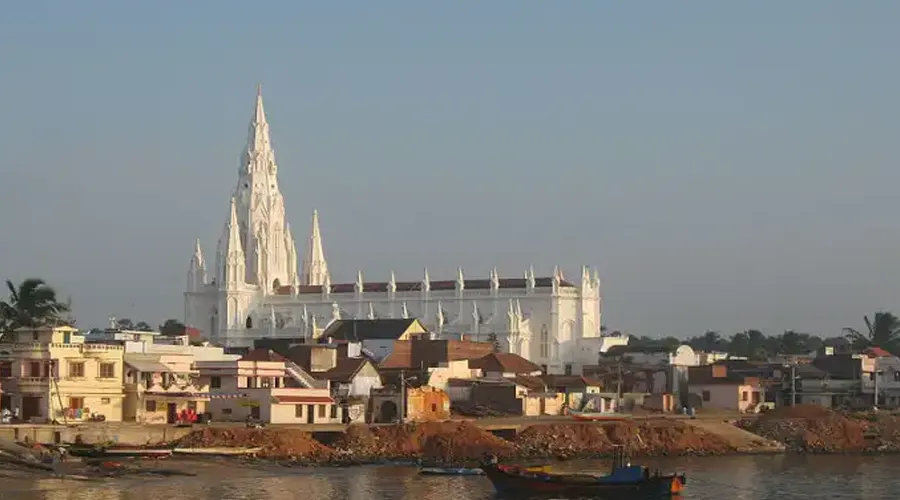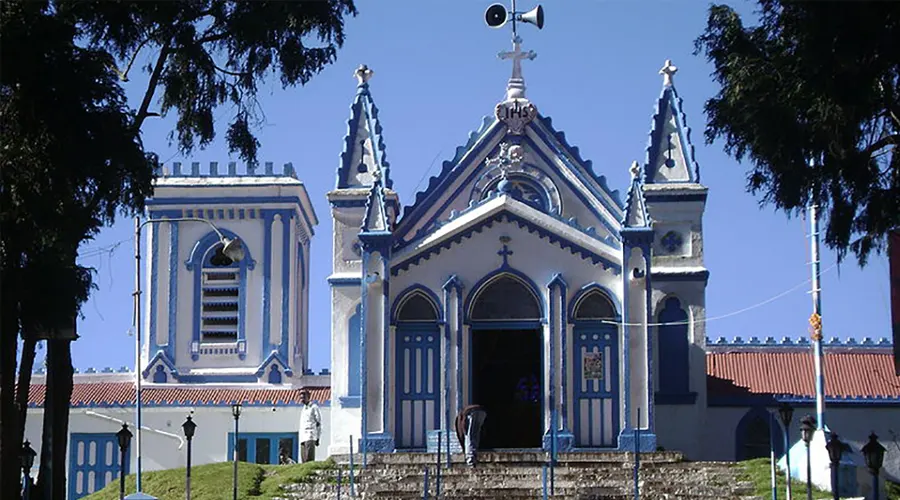Varadaraja Temple
Built-in 1053, the Varadaraja Temple, Chennai is dedicated to Lord Vishnu. The Lord of Knowledge, Lord Vishnu forms an integral part of the temple. The most popular feature of the temple is the hundred-pillar hall that was erected during the Vijayanagar period. Also known as the Nooru Kaal Mandapam, the hundred-pillar hall is made of a single stone.
The Varadaraja Temple in Chennai comprises many small shrines. Also known as the Devaraja Swamy Temple, the Varadaraja Temple is located on the top of Hastigiri or Elephant Hill. 24 long and winding stairs lead to this magnificent architectural wonder.
The main deity of the temple is placed in the center. Embellished in rich clothes and expensive jewelry, the deity is quite imposing. In the corridor leading to the main sanctum, the sculpture of two lizards is a striking feature of the temple’s architecture. Among the two lizards, one is covered with a gold sheet while the other is covered with a silver sheet. The gold and silver represent the sun and moon as the two are depicted near the sculptures.
History of Varadaraja Temple
There is a belief that the temple was first built by the Pallava king Nandivarman II. Varadharaja Perumal Temple was originally built by the Cholas in 1053 and it was expanded during the reigns of the great Chola kings Kulottunga Chola I and Vikrama Chola. In the 14th century, another wall and a gopura were built by the later Chola kings. When a Mughul invasion was expected in 1688, the main image of the deity was sent to Udayarpalayam, now part of Tiruchirapalli District.
It was brought back with greater difficulty after the involvement of a local preceptor who enlisted the services of general Todarmal. Robert Clive, the British general during the colonial period visited the Garuda Seva festival and presented a valuable necklace (now termed Clive Maharkandi), which is adorned during a special occasion every year.
The Legend is that Lord Brahma performed a Yaga in Hasthigiri, Kanchi for purifying his mind. He performed the Yaga avoiding his consort Saraswathi but with other Devis Savithri and Gayathri. Knowing the design of Brahmma, Saraswathi took the form of the river Vegavathi and tried to flow on the Yaga to destroy it. Brahmma sought the help of Vishnu. Lord Vishnu came there and laid himself across the river in his birthday suit and prevented the flood.
The Yaga was completed Lord Vishnu emerged from the Yaga flames and gave darshan as an Archavatharamoorthi to the desire of Brahma. The Lord is therefore called ‘Hasthigirinath’ and ‘Varadaraja Perual ‘. The burn-marks caused by the flames could be seen even today in the refulgent face of the Utsavamoorthy, the processional deity. The Lord is self-manifest (Svvayam-Vyatka) and not installed by any being, divine or human.
The name Hastigiri is applied in the association of Gajendra moksham and from the myth that Indra’s elephant Airavatam, in the form of a hill bears the image of Lord Vishnu. The name Attiyurar emerges from the ritual, that the original image of Varadaraja Perumaal here was made from Attimaram.
Architecture of Varadaraja Temple
Varadaraja Perumal Temple is huge within a 23-acre (93,000 m2) complex and shows the architectural skills of ancient Vishwakarma Sthapathis in temple architecture and is famous for its holiness and ancient history. The temple has 3 outer precincts (prakarams) namely Azhwar Prakaram, Madai Palli Prakaram, and Thiru Malai Prakaram. There are 32 shrines, 19 vimanas, 389 pillared halls (most having the lion-type yali sculpture), and sacred tanks some of which are located outside the complex.
The main sanctum faces west and can be entered through a 130 feet tall, 7-tiered raja gopuram (main gateway tower). The eastern gopuram is taller than the western gopuram, which is contrasting with large temples where the raja gopuram is the tallest one. One of the most famous architectural pieces in the temple is the huge stone chain sculpted in a single stone. There is a 100-pillared hall that has sculptures depicting Ramayana and Mahabaratha. It is a masterpiece of Vijayanagara architecture.
The shrine of Varadarajaswamy is on a small hillock 10m tall and has a flight of 24 steps, termed “Hasthagiri”. It has murals of the late Vijayanagara Empire on the ceiling. Other significant features of the temple are beautifully carved lizards and gilded with gold, over the sanctum. The vimana over the sanctum of Varadaraja Swami is called Punyakoti Vimanam and the one over Perundevi Thayar shrine is called Kalyana Koti Vimanam.
Apart from the main stone idol, the Varadaraja Perumal temple has the wooden image of Varadarajaswamy preserved within a silver box from which water is pumped out every 40 years. There is a shrine of Narasimha on the hillock. The origin of the mask of Narasimha is mysterious and believed to possess inexplicable powers.
The second precinct downstairs contains four shrines, of which the important one is of Malayala Nachiar (Kerala consort), presumably built during the Chera kings in the early 14th century.
The third precinct has the shrine of Goddess Perundevi Thayar – it is customary for devotees to visit the shrine first before visiting the main Perumal shrine. There are four small pillared halls, identical in structure, called Thulabara Mandapas built-in 1532 for a ceremony of Achutaraya of the Vijayanagara empire.

